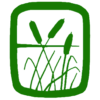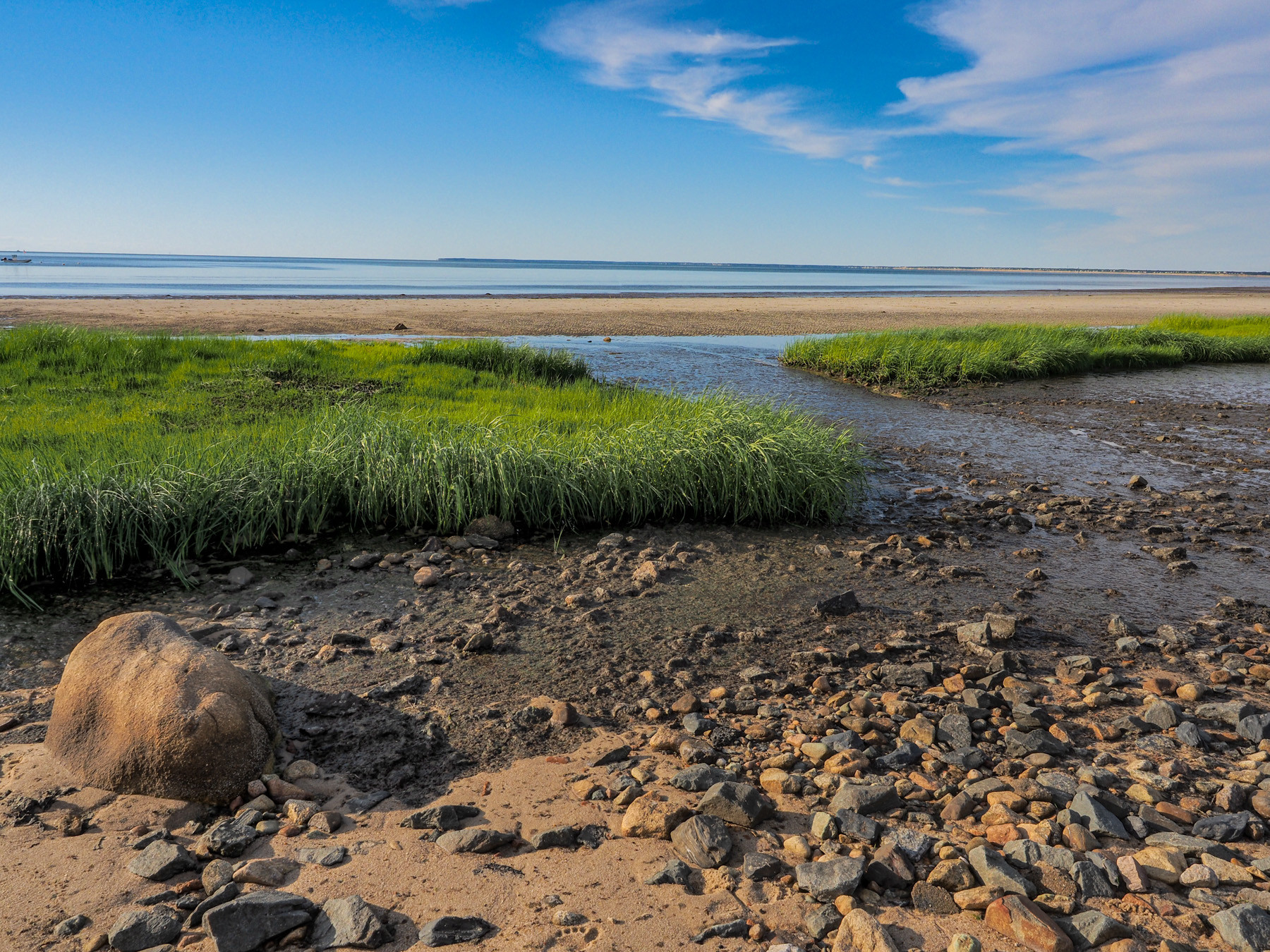Invasive Species vs. Native Plants
Q & A session with BCT Land Stewardship Coordinator,
Jon Bruce
If you’ve ever taken a walk at Eddy Sisters, you’re sure to have seen all the bees and butterflies flying from flower to flower in a sea of yellow and pink. Eddy Sisters represents an area of critical habitat for native pollinators. The goldenrod, hollow joe-pye weed, and common milkweed, all offer food and shelter to our fluttering friends. Although this area was protected by the Trust, there’s a silent and increasing threat this pollinator habitat; invasive species.
Take for the example the native black walnut tree or the maple trees growing in the former cranberry bog at Eddy Sisters. Walnut trees have been shown to support over a hundred different species of animals, while maple trees have been shown to support over 250! (Tallamy, 2016). However, the Asiatic bittersweet and the porcelain berry smothering them, or the White Poplar trees growing by the bird boxes, don’t support any of the wildlife native to Cape Cod.
Furthermore, invasive species don’t have any natural predators, allowing these plants to have a competitive advantage over native species, and allows them spread quickly. They have other characteristics that make them even more of an advantage, like leafing out earlier and dropping leaves later in the season. There are direct and indirect threats of invasive species to our natural lands:
-
-
- Direct:
- Preying on native species (Asian long horn beetle, gypsy moths)
- Outcompeting native species for food and other resources like sunlight (Japanese knotweed, phragmities, purple loosestrife, garlic mustard)
- Carrying and causing disease (Dutch elm disease by elm bark beetles)
- Preventing a native species from reproducing or killing it’s young (black swallowwort and monarch butterflies)
- Noxious weeds (cypress and leafy spurge, yellow horn-poppy, giant hogweed)
- Indirect:
- Destroying or replacing native food sources and provide little to no food or habitat value for wildlife
- Reduce the biodiversity of an ecosystem, which is what makes environments resilient to stressors like drought and disease (kudzu, phragmities, leafy spurge)
- Change environmental conditions:
- Like soil chemistry by releasing allelopathic chemicals (knotweed, black locust, honeysuckle leafy spurge, garlic mustard, velvet grass)
- Or tidal influence (phragmities)
- Reduce water quality (phragmities)
- Increase erosion rates (rosa rugosa, salt cedar, knotweed)
- Changing wildfire regimes (cheatgrass in the West)
- Direct:
-
Furthermore, most birds feed primarily on insects, and insects native to Cape Cod can’t eat plants native to Asia or Europe. That’s because as plants evolved, they created chemicals that they store in their leaves and stems to prevent getting eaten. But certain insects developed ways or mitigating these chemicals to be able to eat the plants. So non-native plants have a different chemical makeup that prevents insects from eating them. So more non-native plants equals less food for insects which means less insects and then less birds.
Bees and other native pollinators need a certain amount of nutrients from nectar to survive, so many pollinators float from plant to plant to get enough of those nutrients. However, many native pollinators still need native plants to fill other parts of their lifecycle, and invasive plants don’t do that. Think of caterpillars eating leaves, then becoming butterflies. The caterpillar needs that native leaf to grow and develop into a butterfly, but that butterfly may still be able to get some nutrients from a non-native flower.
What are the worst invasive species that are found on BCT Properties?
Invasive species are so wide spread that many of the plants you may recognize as just part of the woods are probably invasive. Plants such as Japanese knotweed, or phragmites are a common site along 6A. Other plants like burning bush with it’s gorgeous fall colors is a common garden shrub, the fast growing tree of heaven with scented wood, or the shrub honeysuckle, and multiflora rose acting as a privacy shield between you and you neighbors, are all invasive species.
Think about monarch butterflies. Huge clouds of these beautiful butterflies used to migrate from Canada to Mexico with a population 500 million strong. But for monarchs, native monarchs are an essential part of their lifecycle. Not only is it the only food they eat, but they also lay their eggs on them. But because milkweed has been rapidly disappearing, to make way for crops or parking lots or our yards, so too have monarchs. Black swallowwort is an invasive vine with a flower similar to milkweed plants. With no milkweed available, monarchs will lay their eggs on these. However, with black swallowwort, there is a 100% failure rate of those eggs. So not only is milkweed becoming less available, but black swallowwort is actively killing monarchs. This has resulted in over an 80% declined since the 1980s.
Other less famous native pollinators have the same story. And without these pollinators, there’s no food for people as well. So supporting native plants, and fighting invasives where we can, is critical for our natural lands and us.
So what can I do?
-
- One of the first steps is learning about invasive species, so just reading this you’re doing great!
- Other things you can do to support our native pollinators, and other native wildlife, is create a pollinator garden! Many beautiful flowers, like joe-pye weed, goldenrod, New England aster, or butterfly weed, all make great additions to any garden. If you’d like to take it a step further, consider reducing the area of your turf lawn and replacing it with a meadow of native grasses and flowers. Not only will this support pollinators, but it will reduce the amount of fertilizer used on lawns that is washing into our waterways which degrades water quality and contributes to algae blooms.
- The last thing you can do, and the most important thing, is to tell and educate others about invasive species. They are a slow threat to our natural lands. Many people don’t recognize these species as bad because they are either pretty, or that’s all they know. Take a trip to Eddy Sisters to see the beauty of native species, read about the important of native pollinators, and see the work that the BCT is doing to be good stewards of the land.
- For more information about how you can create eco-friendly landscapes, visit the APCC website here. Or pick up a copy of Bringing Nature Home or Nature’s Best Hope, both by Douglas W. Tallamy. These books are easy to read and provide many suggestions on how you can be a conservationist in your backyard.
Sánchez-Bayo, Francisco, and Kris A.G. Wyckhuys. “Worldwide Decline of the Entomofauna: A Review of Its Drivers.” Biological Conservation, Elsevier, 31 Jan. 2019

